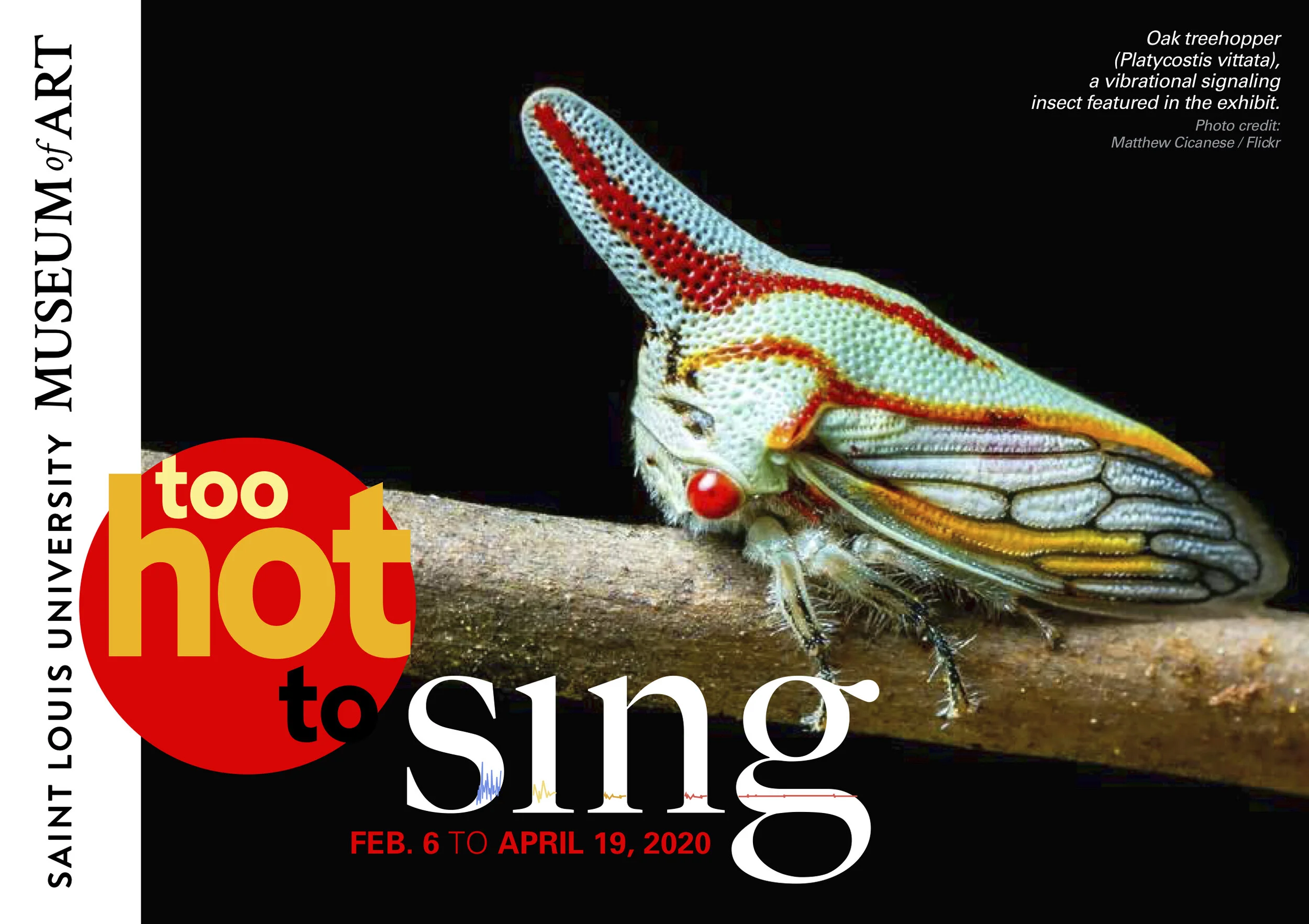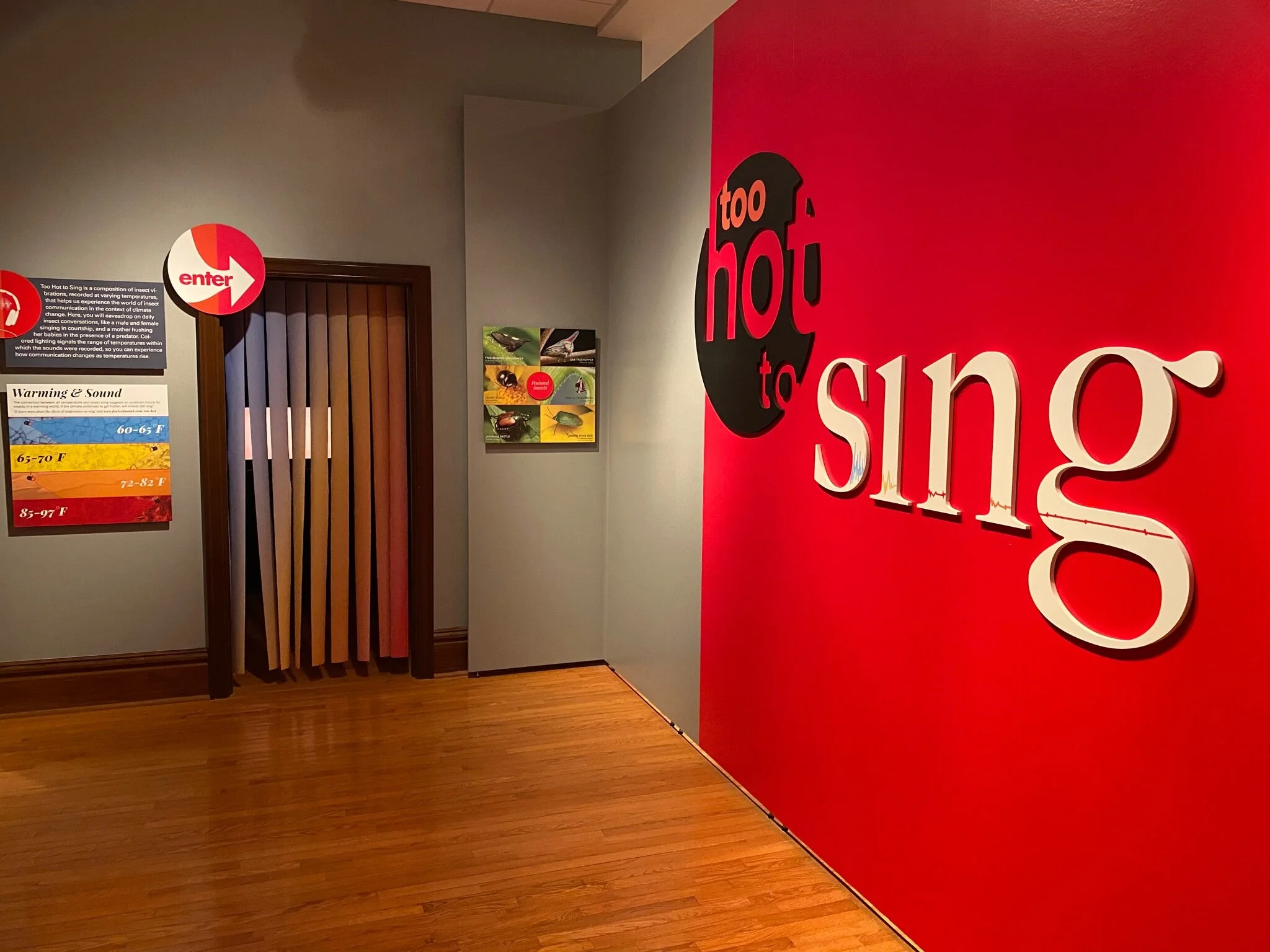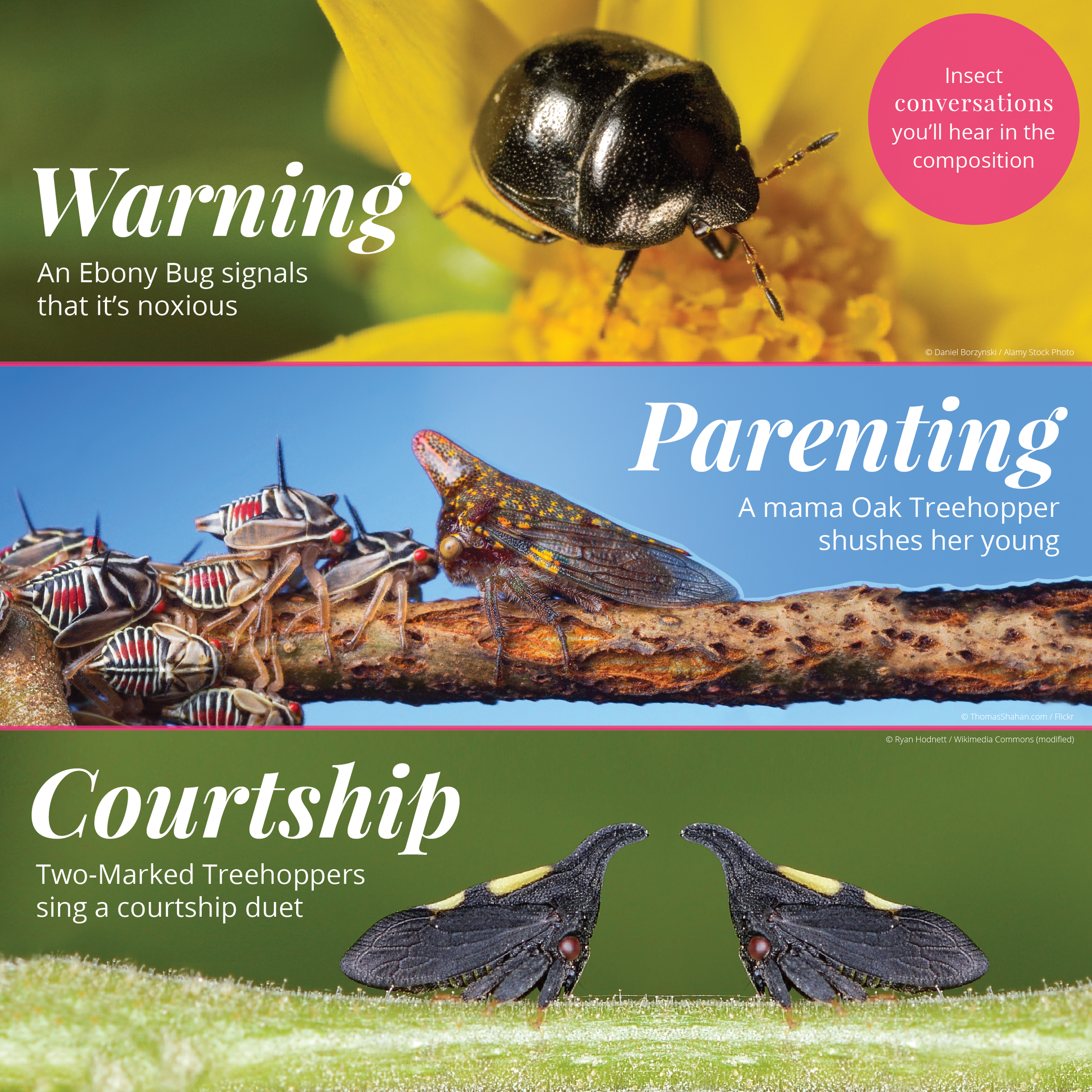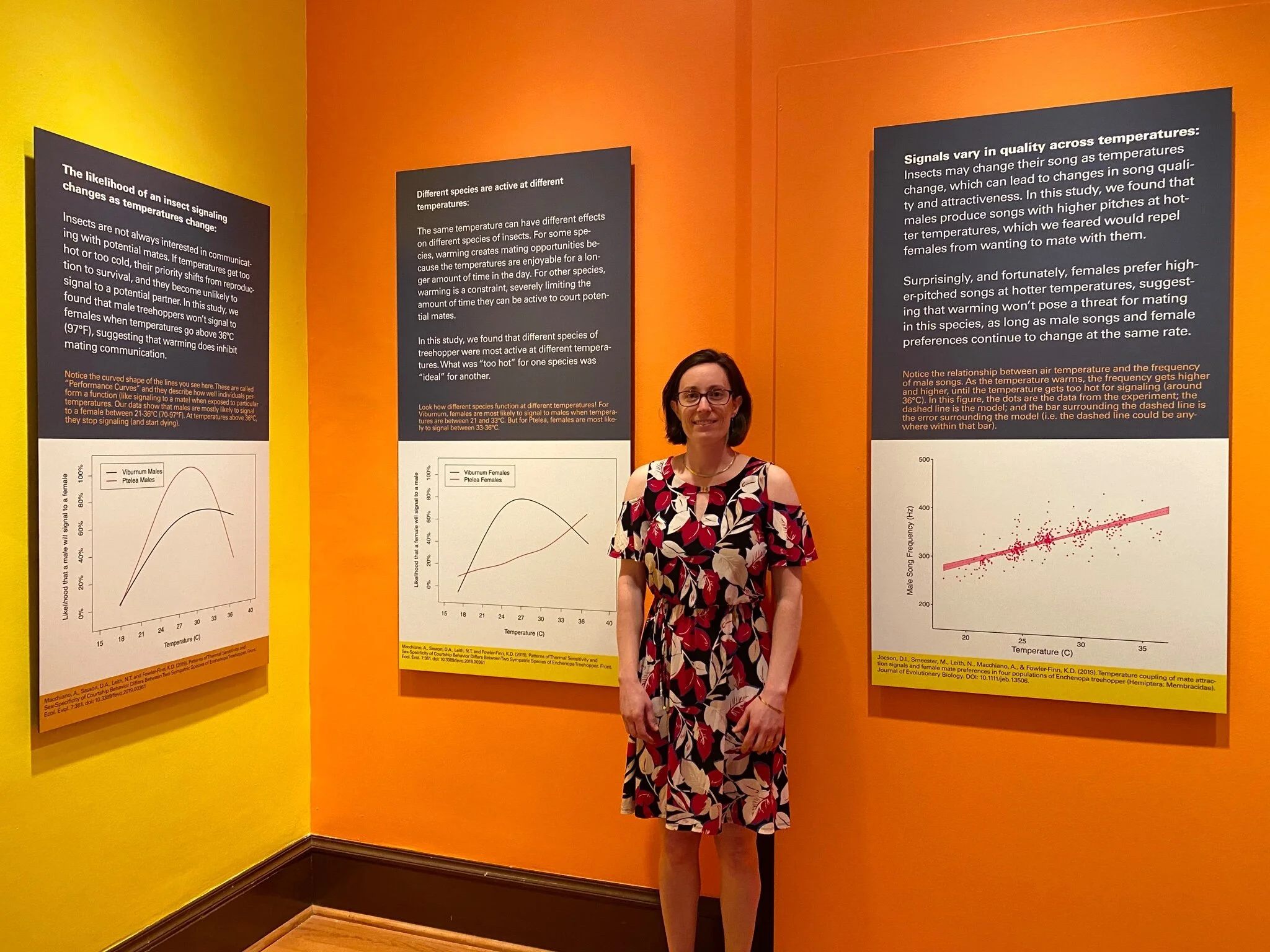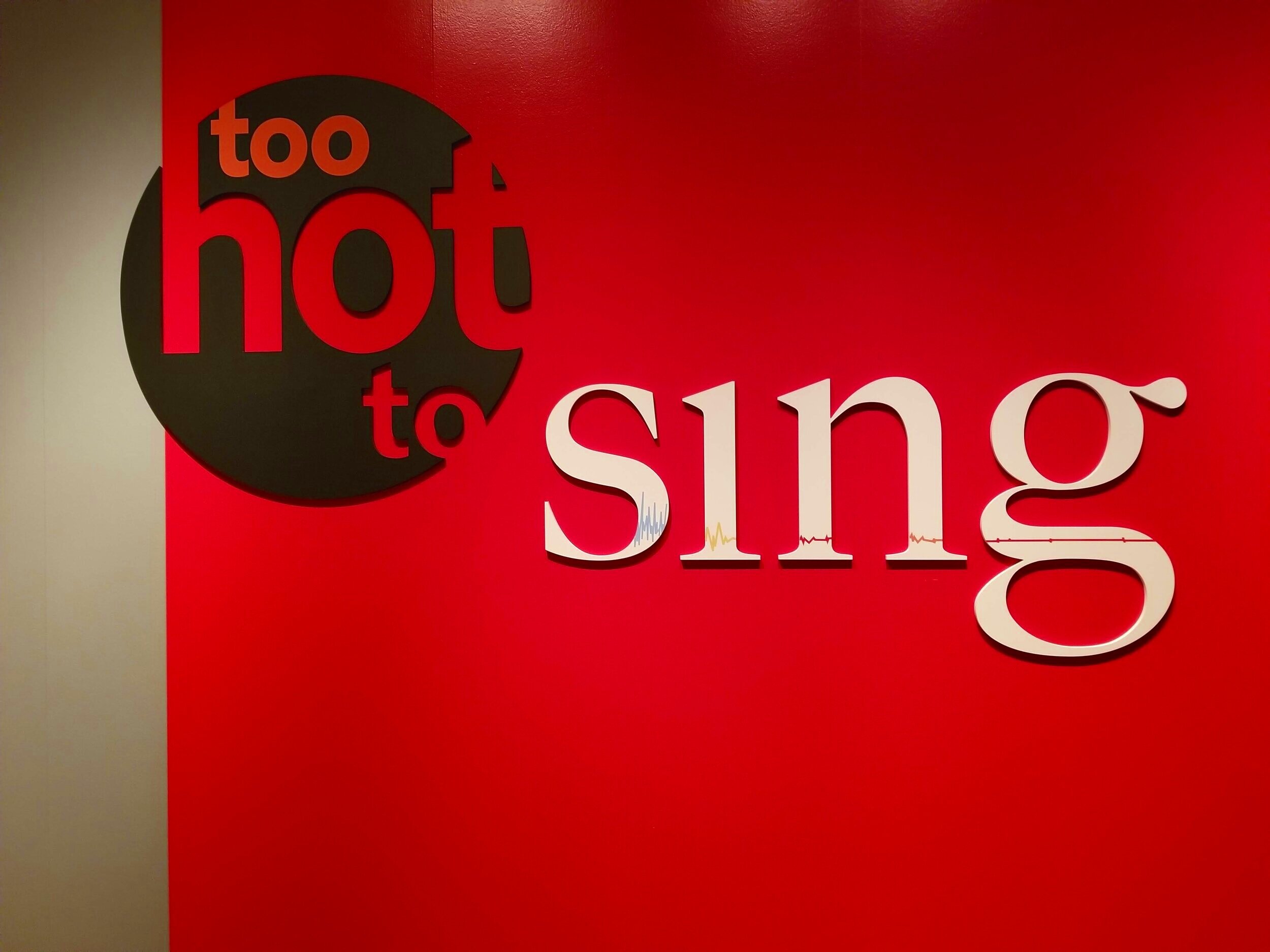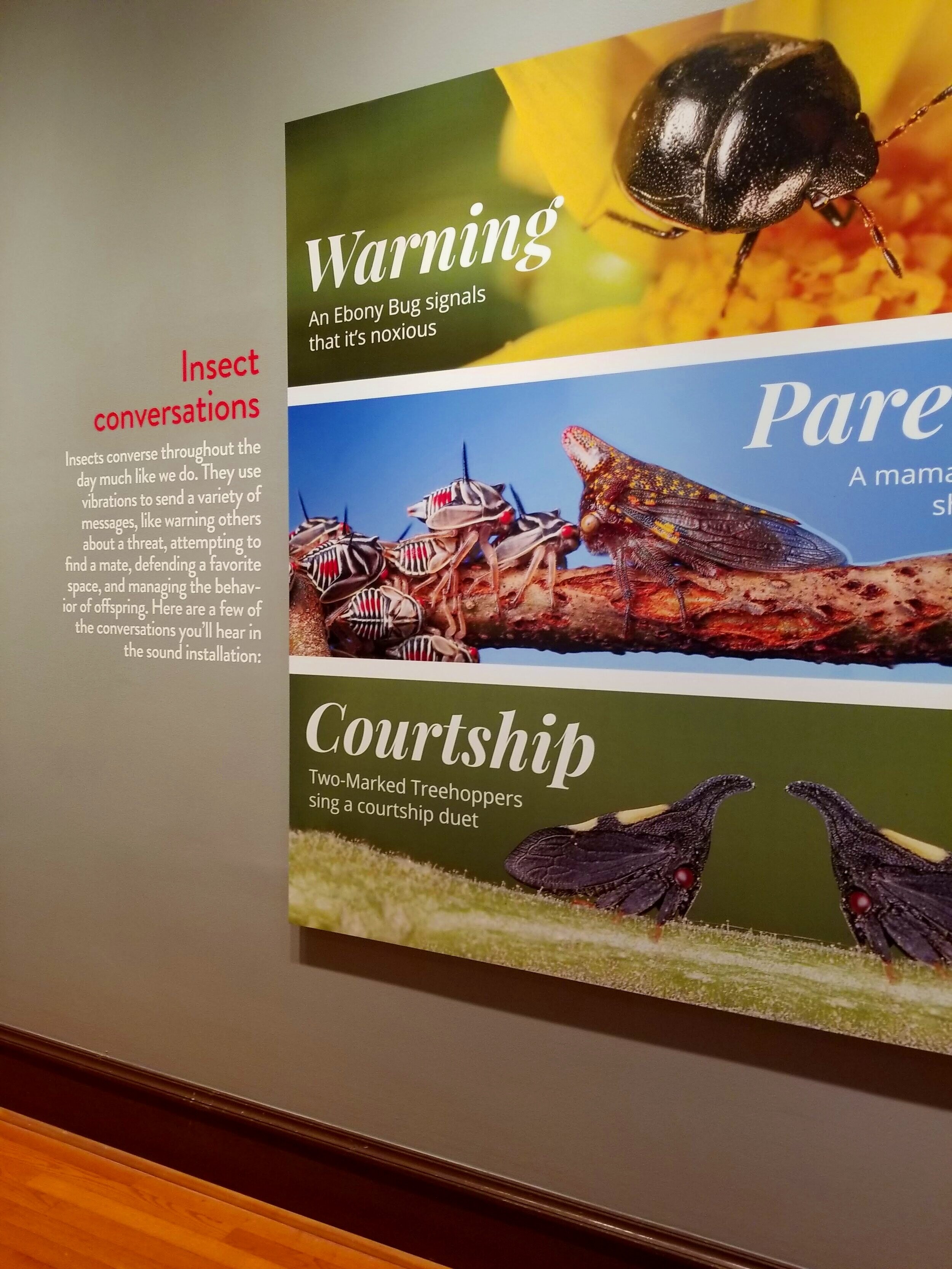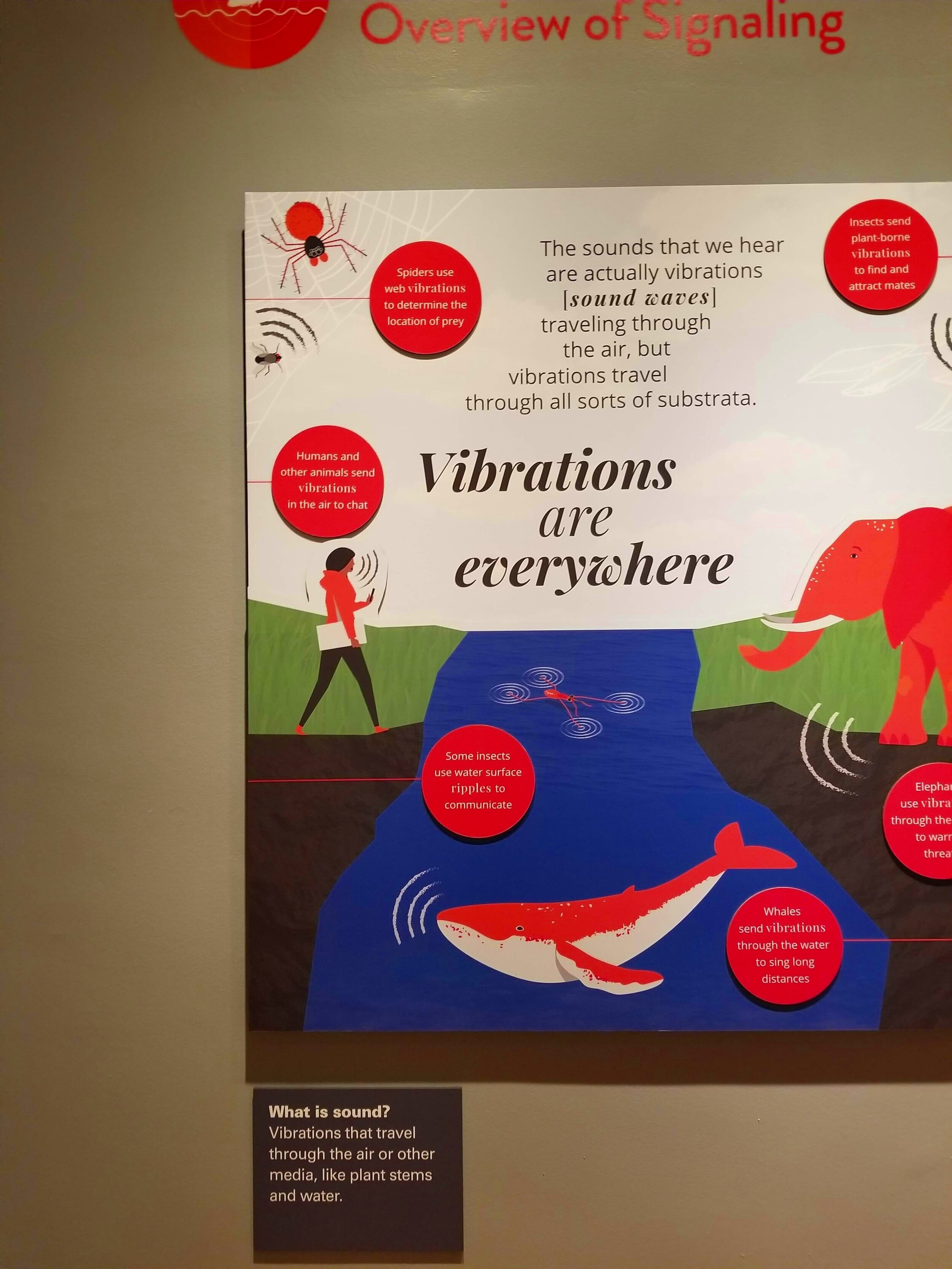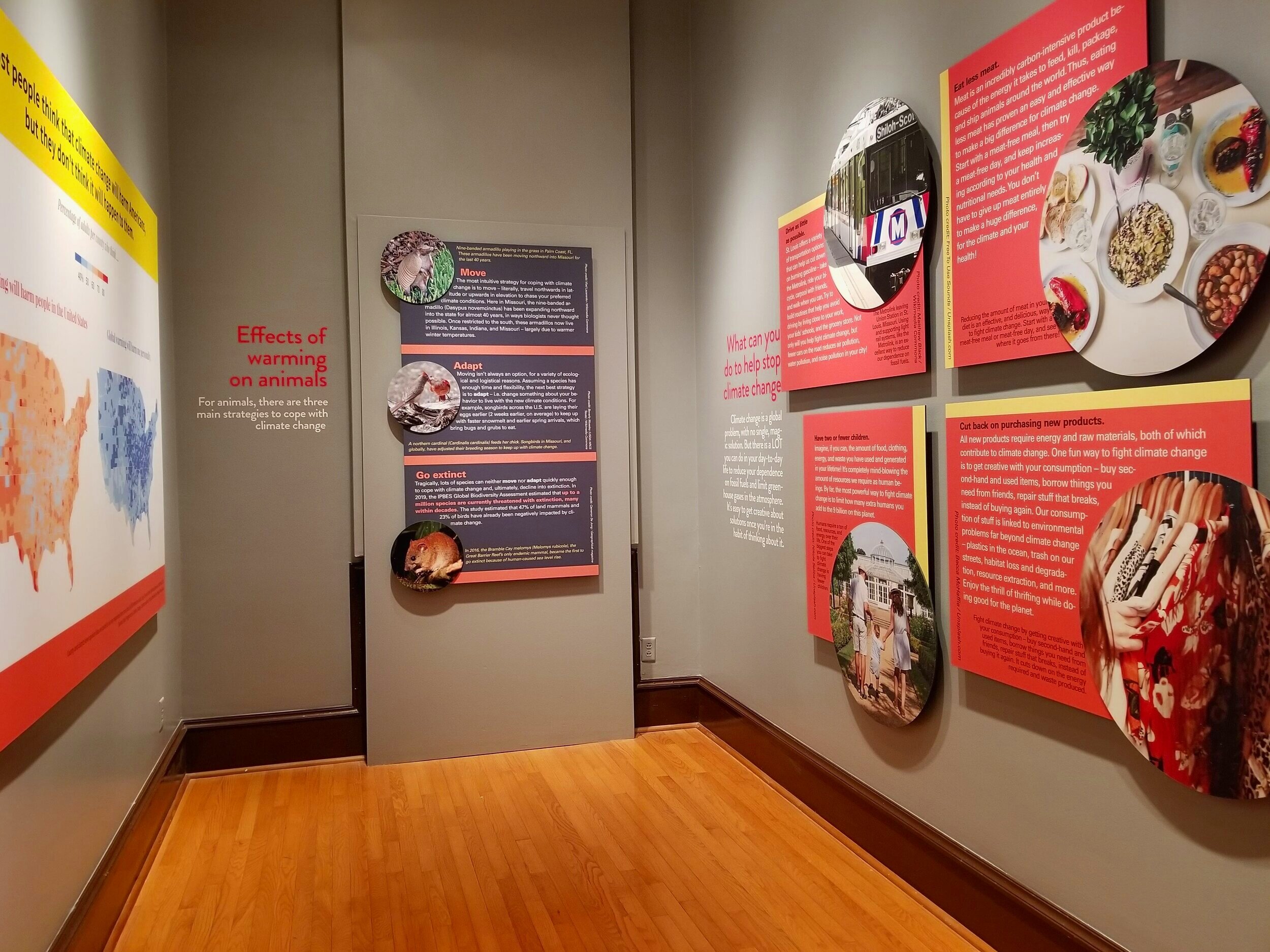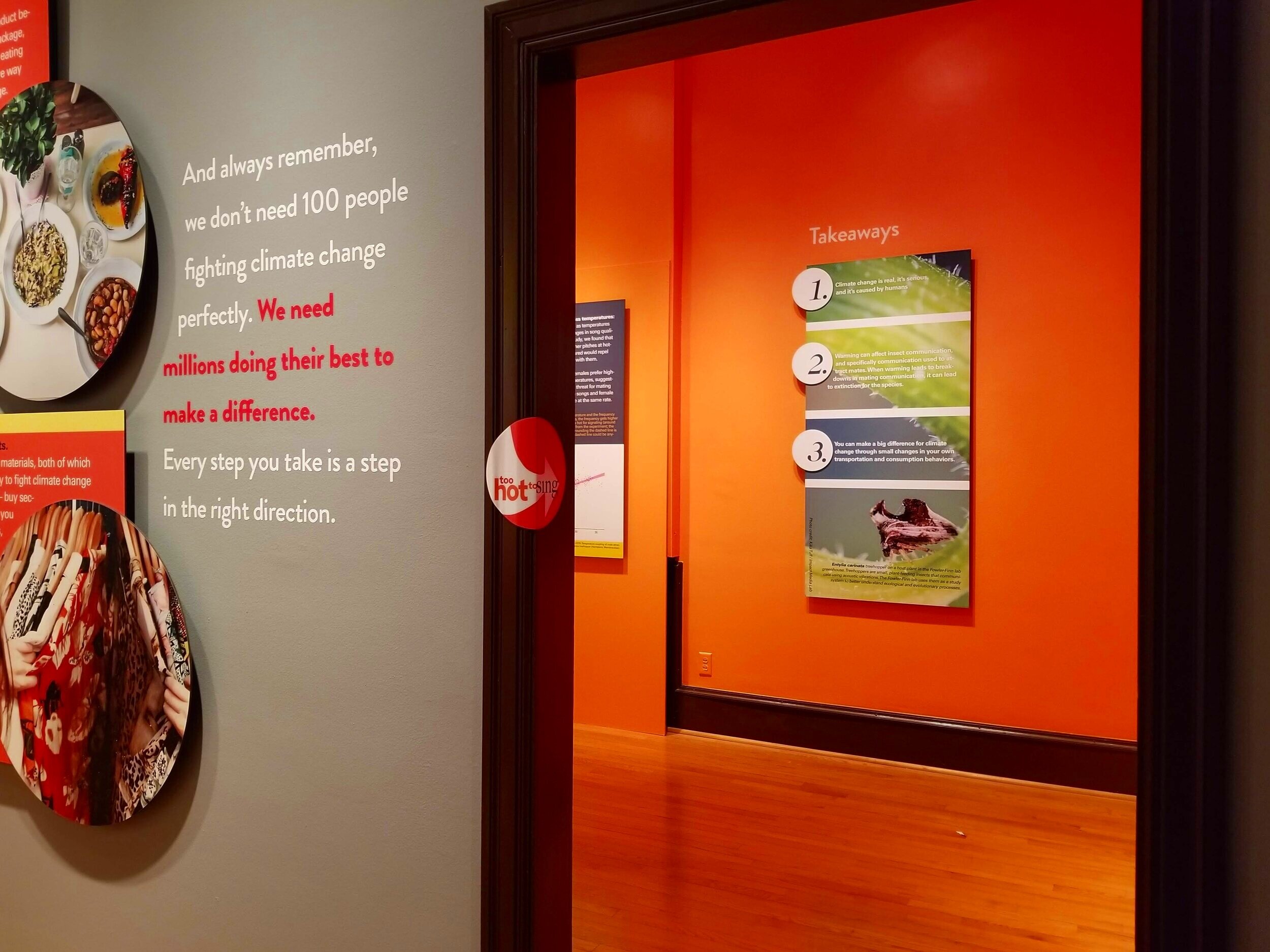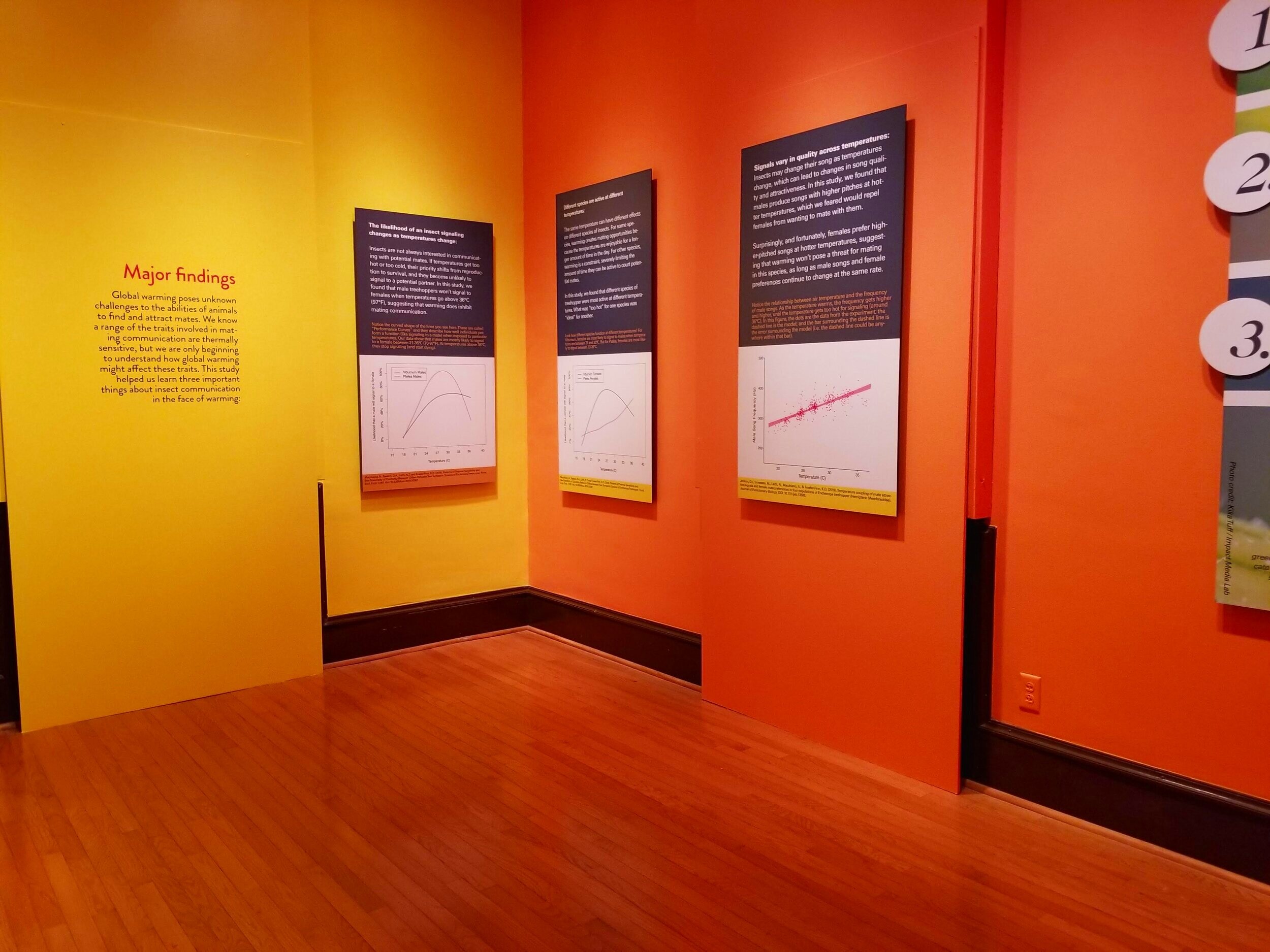Too Hot to Sing | In-person exhibit
The Project:
Client:
This is the second installation of the “Too Hot to Sing” exhibit, which tells the story of insect vibrational communication in the face of rising global temperatures. The exhibit showcases the research of Evolutionary Biologist Dr. Kasey Fowler-Finn, with an immersive sound installation by Sound Artist Stephen Vitiello and an interactive museum exhibit by Impact Media Lab. The project is financed through a National Science Foundation grant that we helped write in 2016.
goal:
Translate scientific information into an emotional experience. In this exhibit, we go beyond explaining the consequences of climate change - we help viewers experience it for themselves. Stephen’s composition immerses listeners in the soundscape of insect conversations. Listeners can then track changes in communication as temperatures rise - in particular the silencing of thermally sensitive species following warming.
the exhibit
overview
Too Hot to Sing is an exhibit and sound installation based on insect vibrations captured at the Mountain Lake Biological Station in Pembroke, Virginia. Sound artist Stephen Vitiello and Evolutionary Biologist Kasey Fowler-Finn recorded vibrations using surface-based devices like accelerometers, lasers, and record needles. They worked across seasons to capture vibrations in different thermal conditions, ranging from cool (~60°F) to hot (~100°F). Vitiello then layered the vibrations into four compositions, corresponding to the thermal conditions experienced at the time of recording. The end product is an aural experience that helps viewers experience changes in insect communication in the face of global warming.
The exhibit is spread across 5 rooms . The first room provides an overview of the show and what to expect. The second room introduces the audience to the world of vibrational signaling, in insects and beyond. The third room focuses on what we know about climate change - its effects on animals and what we can do to slow it down. The fourth room dives deeper into Dr. Fowler-Finn’s research and her findings related to the effects of warming on insect communication. The 5th room features the sound installation, the climax of the exhibit, which uses colored lights to mark changes in compositions (blue, yellow, orange, and red).

